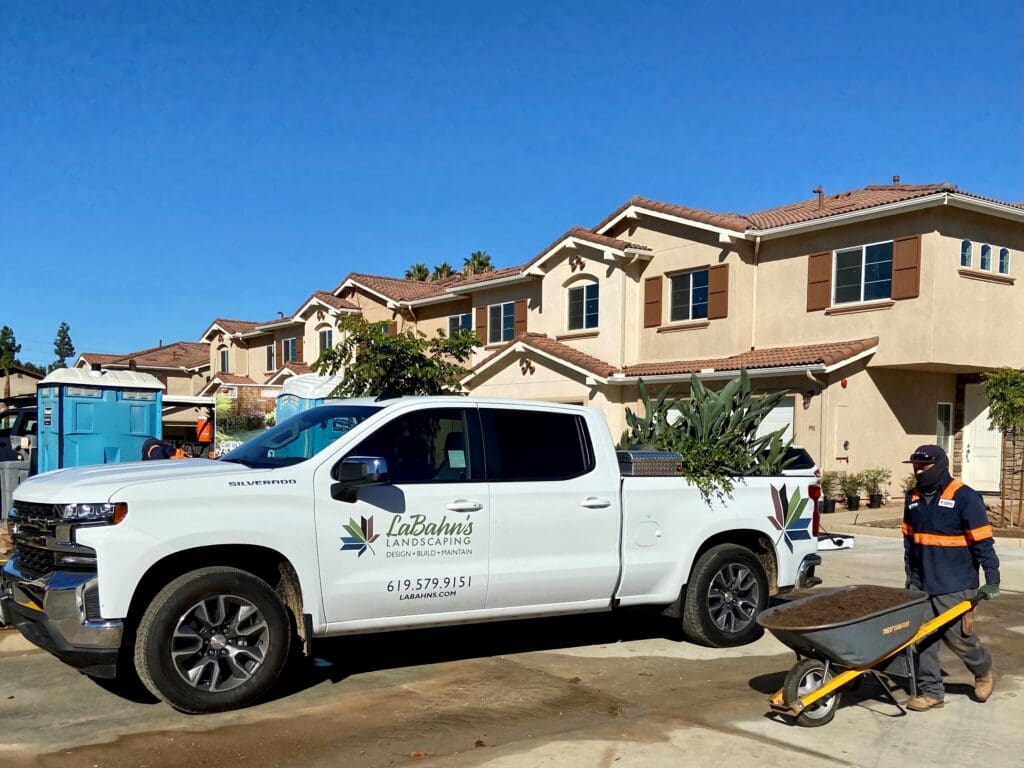
Even with the best route density, your crews spend a significant amount of time behind the wheel. One way to help reduce the risk of accidents occurring while they’re out in the field is to train them in defensive driving tactics.
“No matter how skilled a driver is, the road is littered with potential hazards, from unsafe drivers to road debris, wet conditions, and construction,” says Jessica Bird, director of operations for LaBahn’s Landscaping, based in El Cajon, California. “Emphasizing defensive driving goes beyond protecting the company and its team members; it’s a commitment to the safety of all road users. We all have loved ones who want us to return home safely, and by instilling defensive driving practices, we not only safeguard our own team but contribute to the safety of countless other drivers and passengers on the road.”
Tim Clowney, facilities and fleet manager for Green Lawn Fertilizing, based in West Chester, Pennsylvania, says getting all their drivers home safely is their number one goal. Clowney says their claims have significantly decreased in 2023 as a result of their diligent training and monitoring.
Identifying Problem Areas
Before LaBahn’s Landscaping approves employees as drivers, they conduct DMV background checks. Bird says they regularly inspect their vehicles, including tire sidewalls, for signs of impact. They also listen to their crews for any driver safety concerns when looking for potential issues.
Dave Fleming, general manager for Greenleaf Landscapes, based in Marietta, Ohio, says trucks are mainly billboards. They have customers call with the unit numbers of their vehicles if they see erratic driving, unsecured materials, or defective trucks on the road.
“Our company has had 13 consecutive years of (receiving the) NALP Safety Award for No Recordable Vehicle Accidents,” Fleming says.
Brandon Rushing, CEO of Brandon Rushing Lawn and Garden Care, based in Lorton, Virginia, says they also follow up on complaints by citizens who witness aggressive driving and contact their office. He says the most reliable way to track driving behaviors is with fleet management software. They have been using Quartix for three years to record driving activity and score metrics like acceleration and braking indexes.
Rushing says that access to data helps make good and improvable decisions. Bird says implementing dash cams facing the cab and GPS units that track unsafe driving behaviors can also serve as a deterrent.
“Verbal training, videos and sharing data from fleet management software can all be helpful to relay information and provide tips and training on how to improve scores and results,” Rushing says.
Green Lawn Fertilizing utilizes Azuga telematics to know if a driver is speeding, braking hard or accelerating suddenly. The driver, as well as the manager, is notified immediately if a rule is broken.
“The system is based on scoring; once we see drivers getting into the low 80s, we can identify what they are doing and act from there,” Clowney says. “We currently have 161 drivers with an average score of 90+ year to date. It really is a great tool to have.”
Training Method and Driving Strategies
Bird says while instructional videos are valuable, nothing compares to one-on-one in-vehicle training.
“Combining these resources with hands-on behind-the-wheel training and evaluation ensures a comprehensive understanding of defensive driving techniques,” Bird says. “This approach helps our team members internalize best practices and apply them in real-world driving scenarios.”

She says their stress on defensive driving practices has resulted in a commendable track record of very few accidents, considering the size of their fleet.
Clowney agrees the best way to train defensive driving is through interactive training tools.
“Our training tools offer real-life scenarios to test decision-making skills in specific situations, such as road conditions and proper turning at intersections,” Clowney says. “Additionally, we conduct a comprehensive Record of Road test to evaluate driving performance. Based on the results, we provide valuable feedback to help improve driving habits.”
Fleming says they conduct weekly toolbox meetings and discuss accidents that have occurred in the area. Rushing says they also have weekly safety meetings and share about near-miss stories and how to prevent them before dispatching.
It is important for crew members to know the vehicle they are operating as each is driven differently. Rushing says their fleet has both passenger cars and larger 19,500 GVWR vehicles.
Towing trailers can call for variations to defensive driving tactics, including a longer stop time, more space for lane changes, and paying attention to surroundings when turning. Bird says that practical behind-the-wheel exercises in controlled environments are essential to enhance a driver’s skills in turning, parking, maneuvering, and backing up with a trailer.
“Follow all the laws and try not to back up too much,” Clowney says. “With a trailer, backing can be an issue; the less backing the better.”
Bird says they prioritize a pre-departure 360-degree vehicle check to ensure lights, signals, mirrors, and tires meet safety standards, and all equipment is properly secured. Fleming advises ensuring that trucks have first aid kits, road reflective kits and extinguishers.
Most defensive driving practices can seem common sense, but they should not be neglected. This includes stopping by weight and speed, leaving the proper distance for the car ahead of you, and driving in the right lane and passing only when necessary in the other travel lanes.
“One of the easiest things that we talk about is to follow the driving laws — that is step one,” Clowney says. “After that is to always maintain distance between vehicles in case of a quick stop. Stay alert and don’t let other aggressive drivers have an effect on how you are driving — let them pass. Be well rested is another point that may be overlooked, our motor skills are obviously decreased when we are tired.”
Bird says staying focused while driving is also critical, so they use CoPilot to monitor crew cell phone usage.
Fleming says having a drug-free workplace and not eating or drinking while driving are also beneficial to safe driving habits.
Advice for Others
If you want defensive driving to become part of your culture, tracking and identifying areas for improvement, training regularly and rewarding your team all help with adoption.
Clowney encourages investing in telematics to gain real-time feedback on your fleet.
“It’s easy to provide videos and quizzes; however, once the drivers are done with that information, they aren’t as likely to reference that information,” Clowney says.

Bird adds that while accidents are inevitable, preparedness is key. She advises creating comprehensive binders for each vehicle containing registration, insurance information, emergency protocols, and accident forms (along with a pen) to streamline the response to these types of events.
Encourage a culture of accountability and learn lessons from incidents that can enhance safety across the fleet.
“Rewarding good drivers with something monetary and recognition among peers can also help improve driving behaviors and overall company safety records,” Rushing says.
Green Lawn Fertilizing recognizes their top 10 ranked drivers each month, along with a branch award for the branch with the highest combined score. At the end of the year, the drivers with a score of 91 or above are entered into a raffle to win a new Ford F-150.
“This initiative fosters a sense of ownership among our drivers, and reiterates our commitment to prioritizing the safety of each and every driver,” Clowney says.
This article was published in the March/April issue of the magazine. To read more stories from The Edge magazine, click here to subscribe to the digital edition.



